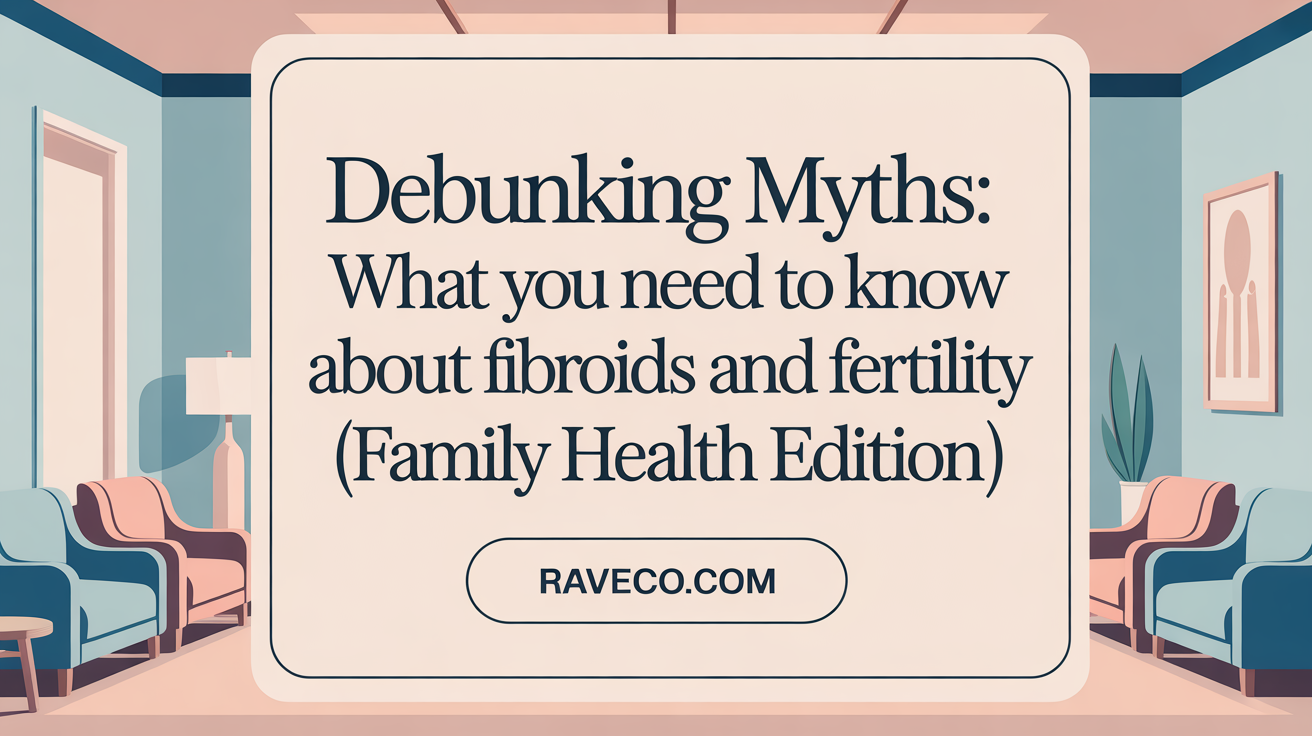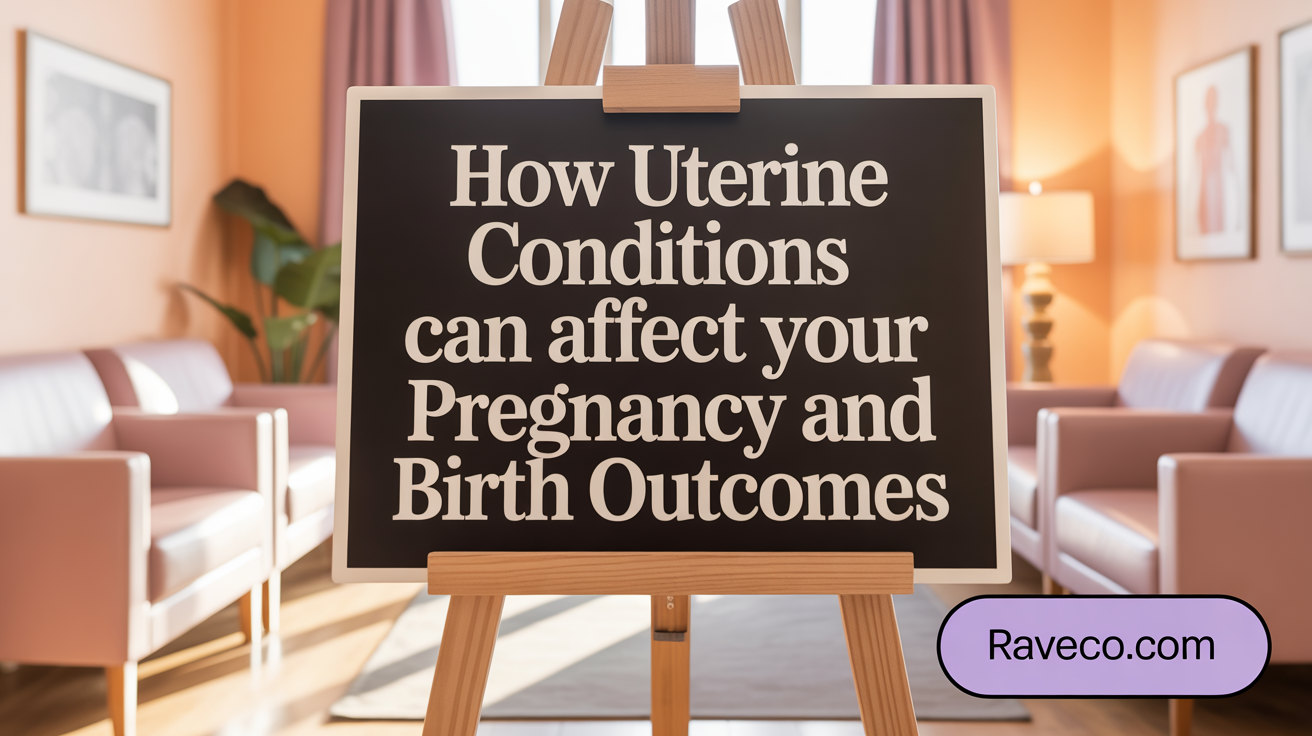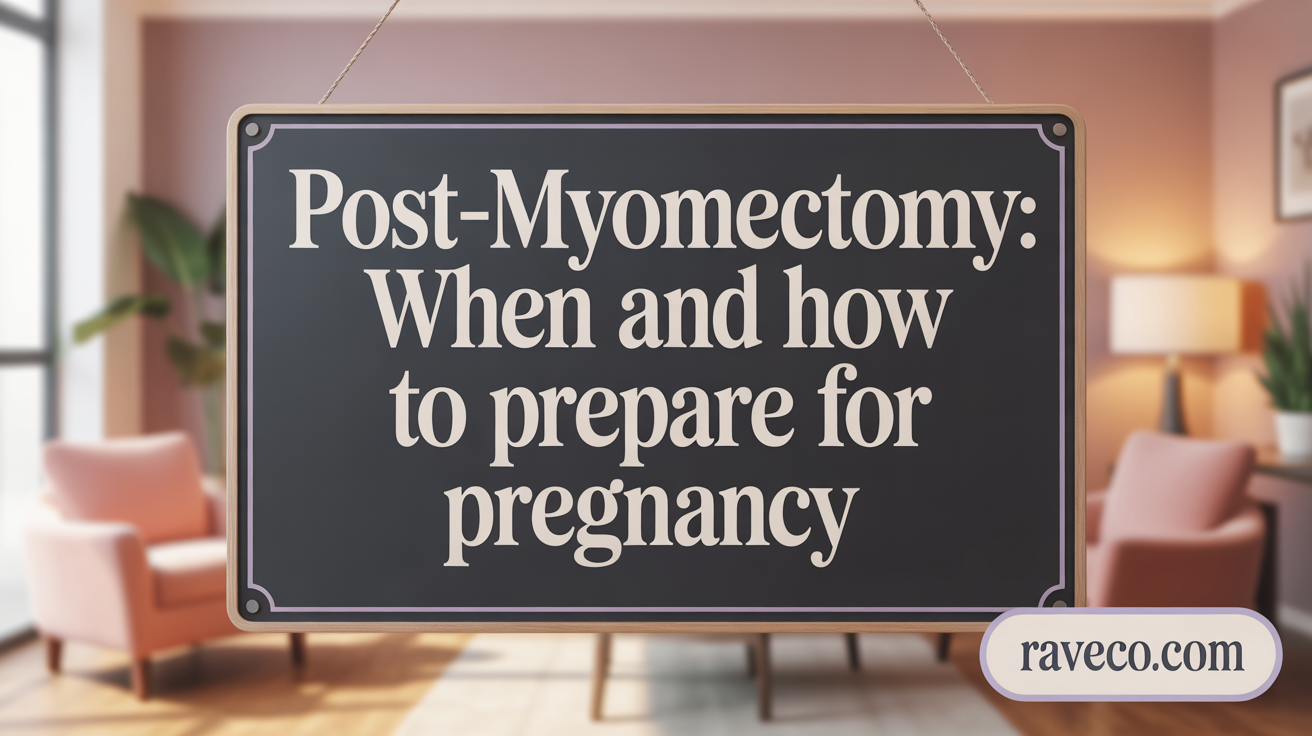Recognizing the Right Time to Address Female Infertility: Key Indicators and Expert Care in Queens

Understanding Fibroids and Their Impact on Reproductive Health
Uterine fibroids, benign growths of muscle and fibrous tissue in or around the uterus, affect a significant portion of women during their reproductive years. Although often symptomless, fibroids can pose distinct challenges for fertility and pregnancy depending on their size, number, and location. This comprehensive guide explores the relationship between fibroids and fertility, providing clarity on symptoms, diagnosis, treatment options, and management strategies to help patients make informed decisions about their reproductive health.
What Are Fibroids and How Do They Affect Fertility?
What are fibroids and how can they affect fertility?
Fibroids are benign tumors composed of muscle and fibrous tissue that develop within or on the uterus. They are common and can vary significantly in size, from small pea-sized growths to larger masses the size of a melon.
Many women with fibroids are asymptomatic, meaning they may not experience any noticeable symptoms. However, some women do encounter problems such as heavy menstrual bleeding, pelvic pain, pressure on the bladder or rectum, and pain during intercourse.
Fibroids can impact fertility depending on their size, number, and location. Submucosal fibroids, which grow inside the uterine cavity, often interfere with embryo implantation and increase the risk of miscarriage. Intramural fibroids, located within the muscular wall of the uterus, can distort its shape and impair blood flow, affecting the environment needed for conception and pregnancy.
The exact cause of fibroids remains unknown. They tend to grow under the influence of hormones like estrogen and progesterone, which is why they often develop during reproductive years and may enlarge during pregnancy.
When considering fertility, the primary concern is whether fibroids obstruct fallopian tubes or distort the uterine cavity, making conception more difficult. They may also interfere with embryo implantation or cause complications during pregnancy.
Treatment options for women with fibroids are tailored based on symptoms and reproductive goals. Non-surgical treatments include hormonal therapies such as GnRHa, which can temporarily shrink fibroids. Surgical options like myomectomy remove the fibroids while preserving the uterus, significantly improving fertility prospects. Less invasive procedures like uterine artery embolization are also available but may be less suitable for women trying to conceive.
In conclusion, fibroids can influence fertility through physical disruption of reproductive structures and hormonal effects. Many women with fibroids successfully conceive and carry pregnancies, especially with appropriate management and treatment.
| Fibroid Type | Impact on Fertility | Treatment Approach | Additional Notes |
|---|---|---|---|
| Submucosal | High likelihood of affecting implantation and increasing miscarriage risk | Myomectomy, hysteroscopic removal | Distorts uterine lining, blocks fallopian tubes |
| Intramural | Can alter uterine shape and blood flow, impairing fertility | Myomectomy, minimally invasive techniques | Size and location influence impact |
| Subserosal | Typically less impact on fertility | Usually no treatment needed | Outside uterus, mainly causes discomfort |
Understanding the relationship between fibroids and fertility helps women and healthcare providers choose the most appropriate interventions to optimize chances of conception and a healthy pregnancy.
Fibroid Types, Sizes, and Their Influence on Fertility
Classification of fibroids by location: submucosal, intramural, subserosal, pedunculated
Fibroids are categorized based on where they develop in or on the uterus. Submucosal fibroids are located just beneath the lining of the uterine cavity and often protrude into the uterine lumen. Intramural fibroids grow within the muscular wall of the uterus, affecting its shape and size. Subserosal fibroids develop on the outer surface of the uterus and may grow large without impacting fertility directly. Pedunculated fibroids hang from a stalk, either inside (submucosal) or outside (subserosal) the uterus.
Fibroid size considerations
Size plays a crucial role in determining the impact of fibroids on fertility. Small fibroids, especially those not distorting the uterine cavity, often cause no symptoms and may not affect fertility. Larger fibroids, especially those exceeding 2 inches (about 5 cm), can interfere with normal uterine function. Very large fibroids can distort uterine shape, obstruct fallopian tubes, and impact blood flow, which can impair implantation.
Mechanisms by which different fibroids affect fertility
Submucosal fibroids are most problematic because they directly modify the uterine lining, reducing the chances of embryo implantation. Intramural fibroids that enlarge substantially can distort the uterine cavity or impair blood flow to the endometrial lining, decreasing fertility. Subserosal fibroids, being on the outer surface of the uterus, typically do not interfere with conception unless they grow large enough to exert pressure.
Impact of submucosal and large intramural fibroids on implantation and pregnancy outcomes
Submucosal fibroids often cause infertility by blocking embryo implantation or disrupting the endometrial environment. Large intramural fibroids can have a similar effect if they distort the uterine cavity or compromise blood supply, leading to increased risks of miscarriage or preterm labor. Proper evaluation and management of these fibroids can significantly improve pregnancy chances.
| Fibroid Type | Typical Location | Impact on Fertility | Potential Pregnancy Risks | Size Considerations |
|---|---|---|---|---|
| Submucosal | Inside uterine cavity | Most likely to cause infertility, impeding implantation | Higher risk of miscarriage, preterm birth | Usually <5 cm, but size less critical than location |
| Intramural | Within uterine wall | Can impact fertility if large or distort uterine shape | Increased pregnancy loss, preterm delivery | >4–5 cm more likely to affect fertility |
| Subserosal | Outer surface of uterus | Less impact unless very large or pedunculated | Usually minimal, unless pressing on nearby structures | Size varies; large size may cause pressure |
| Pedunculated | Attached by stalk, can be inside or outside | Variable impact, depends on location and size | Depends on whether it affects uterine or tubal passage | Typically larger, mobile |
Understanding how the location and size of fibroids influence fertility can assist in guiding treatment options. Especially important are submucosal and large intramural fibroids, which are most associated with difficulty conceiving and pregnancy complications.
Common Misconceptions and Clarifications About Fibroids and Fertility

What are common misconceptions about fibroids and fertility?
A widespread misunderstanding is that all fibroids cause infertility. In reality, many women with fibroids, especially small or asymptomatic ones, are able to conceive naturally without issues. Another common belief is that every fibroid requires surgical removal before pregnancy. However, whether treatment is needed depends on various factors such as the size, location, number of fibroids, and whether they are causing symptoms or impairing fertility.
Some people think fibroids only lead to heavy bleeding, pelvic pain, or discomfort. While these are typical symptoms, fibroids can also impact fertility by distorting the uterine cavity, blocking fallopian tubes, or affecting blood flow to the endometrium, thereby impairing embryo implantation. Typically, fibroids located within or near the uterine lining (submucosal) or within the wall (invading the cavity) pose a higher risk of fertility problems than those on the outside.
Overall, the relationship between fibroids and fertility is complex. Not every fibroid affects reproductive ability, and an individual approach to diagnosis and treatment is essential. Fertility can often be preserved, and women with fibroids should consult healthcare providers for personalized assessment rather than assuming surgery or other interventions are always necessary.
Fertility Outcomes and Pregnancy Success in Women with Fibroids

What is the likelihood of pregnancy success with fibroids present?
The chances of conceiving and having a successful pregnancy with fibroids vary based on their size, number, and location within the uterus. Many women with fibroids, even those with larger or multiple fibroids, can successfully conceive and carry pregnancies, particularly when managed appropriately.
Small fibroids, generally less than 5 centimeters in diameter, typically do not significantly impair fertility. However, larger fibroids, especially those over 5 centimeters, and fibroids situated in certain locations like the submucosal layer (lining of the uterus), can increase the risk of miscarriage, preterm labor, and issues during delivery.
Preconception assessments, including detailed imaging such as ultrasound or MRI, help evaluate the impact of fibroids. If necessary, surgical removal via myomectomy can improve fertility prospects and decrease pregnancy-related risks. This surgical approach is particularly advised for fibroids that distort the uterine cavity or block fallopian tubes.
Despite these challenges, many women with fibroids go on to have healthy pregnancies and deliveries. In cases where fibroids impact the birth process, cesarean sections are often recommended.
In summary, individual evaluation is crucial, and with tailored treatment and careful monitoring, women with fibroids frequently experience positive pregnancy outcomes.
For more detailed information, searching “pregnancy success rates with uterine fibroids” provides numerous studies and clinical guidelines on this topic.
Impact of Fibroids on Pregnancy and Obstetrical Outcomes

How do fibroids impact pregnancy and obstetrical outcomes?
Fibroids are benign tumors that develop within the muscular wall of the uterus. Their effect on pregnancy and childbirth depends significantly on their size, number, and precise location within the uterus.
One of the primary concerns is that fibroids can increase the risk of several obstetric complications. These include miscarriage, preterm labor, placental abruption (where the placenta detaches prematurely), and fetal growth restriction. Certain types of fibroids, especially those that distort the uterine cavity or interfere with placental attachment sites, are more problematic.
Large or multiple fibroids can also complicate labor and delivery. They may lead to difficulties such as obstructed labor, and in some cases, necessitate cesarean section. The growth dynamics of fibroids during pregnancy are also noteworthy; they tend to enlarge due to elevated estrogen levels, which can further increase the risk of obstetric complications.
While many women with fibroids conceive without trouble, these tumors can obstruct fallopian tubes or affect the endometrial environment, making conception and implantation more challenging. Managing fibroids through medical therapies or surgical procedures like myomectomy can help mitigate adverse outcomes.
Overall, the impact varies widely among individuals, but proactive management and close obstetric monitoring can improve pregnancy results in women affected by fibroids.
Treatment Options to Enhance Fertility in Women with Fibroids

What treatment options are available to improve fertility in women with fibroids?
Women facing fertility challenges due to fibroids have several treatment avenues to consider. The most effective and fertility-preserving option is a surgical procedure called myomectomy. This surgery involves removing fibroids while leaving the uterus intact, addressing issues like uterine distortion or blockage that can impede conception.
Medical therapies also play a role. Hormonal treatments such as gonadotropin-releasing hormone (GnRH) agonists can temporarily shrink fibroids and alleviate symptoms, which may improve the chances of conception. These medications are often used before surgery or assisted reproductive procedures to optimize conditions.
For fibroids located within the uterine cavity, less invasive interventions like hysteroscopic resection are suitable. This procedure involves removing submucosal fibroids through the cervix, significantly enhancing the uterine environment for embryo implantation.
In cases where fibroids are too large, multiple, or not suitable for surgery—especially when they are located on the outer surface of the uterus—assisted reproductive technologies (ART) such as in vitro fertilization (IVF) may be recommended. IVF can bypass mechanical barriers caused by fibroids, increasing pregnancy prospects.
Choosing the most appropriate intervention depends on specific fibroid characteristics like size, number, and location, as well as the individual woman's fertility goals. Early treatment can improve the likelihood of conception and support a healthy pregnancy.
Post-Surgical Fertility Planning and Management of Fibroids

How soon can a woman conceive after fibroid removal surgery?
The interval before attempting conception after fibroid removal varies depending on the surgical approach and individual healing. Generally, women are advised to wait at least 3 to 6 months following minimally invasive procedures such as laparoscopic or hysteroscopic myomectomy. For open abdominal myomectomy, a longer period of 6 to 12 months is typically recommended to allow proper uterine healing. This waiting period helps reduce the risk of pregnancy complications like miscarriage or uterine rupture.
Monitoring healing involves ensuring regular menstrual cycles, absence of infection, and confirming uterine integrity through follow-up imaging, such as ultrasound or MRI. Many women successfully conceive after completing the healing period, with proper medical guidance. Adequate recovery is crucial for optimizing pregnancy outcomes and ensuring the uterus is strong enough to support a healthy pregnancy.
Guidance on fertility preservation before surgery
Women considering fibroid treatment who wish to preserve fertility should discuss options with their healthcare provider. Fertility preservation methods, such as egg or embryo freezing, may be considered before invasive surgeries like myomectomy if future pregnancy is desired, especially in women of advanced reproductive age. Preoperative evaluation may include hormone testing, ultrasound, or MRI to determine the fibroids' characteristics.
Getting a detailed assessment helps tailor treatment plans that maximize fertility potential. If surgery is necessary, choosing a fertility-sparing procedure, such as hysteroscopic or laparoscopic myomectomy, minimizes disruption to reproductive organs. Proper counseling ensures women understand the implications of treatment timing and recovery for future conception.
Strategies for managing fibroids in reproductive planning
Managing fibroids in the context of fertility involves a thorough evaluation of the size, location, and number of fibroids. For fibroids that distort the uterine cavity or are large and intramural, surgical removal via myomectomy tends to offer the best chance of improving fertility outcomes. Hysteroscopic resection is ideal for submucosal fibroids, as it directly restores the uterine lining. Laparoscopic approaches are suitable for accessible intramural fibroids.
Medical therapies, such as gonadotropin-releasing hormone agonists (GnRHa) or selective progesterone receptor modulators (SPRMs), can temporarily shrink fibroids and alleviate symptoms but are not suitable long-term solutions when planning conception. Uterine artery embolization is generally avoided for women planning pregnancy due to potential obstetric risks.
An individualized approach, considering the patient's age, reproductive goals, and fibroid characteristics, is essential. Close collaboration between reproductive specialists and gynecologic surgeons helps optimize outcomes.
Importance of multidisciplinary care
Effective management of fibroids in women planning pregnancy requires a team approach involving gynecologists, reproductive endocrinologists, and maternal-fetal medicine specialists. This collaboration ensures comprehensive evaluation, personalized treatment planning, and careful monitoring during the preconception period.
Experts can assess the risks associated with fibroids, advise on timing for surgery, and guide fertility preservation strategies if needed. Postoperative follow-up, including imaging and reproductive counseling, helps confirm uterine readiness for conception and optimizes pregnancy chances.
This integrated care model enhances reproductive success and ensures that women receive tailored support throughout their fertility journey.
Empowering Women with Knowledge and Resources on Fibroids and Fertility
Understanding the intricate relationship between uterine fibroids and fertility empowers women to make informed decisions regarding their reproductive health. While fibroids are common and often asymptomatic, their potential to affect conception and pregnancy outcomes depends on multiple factors such as size, location, and symptomatology. Advances in diagnostic methods and tailored treatment strategies, including fertility-preserving surgical options and medical therapies, offer hope for many women desiring pregnancy. Collaborative care involving fertility specialists and obstetricians optimizes management and outcomes. Ultimately, personalized evaluation and timely intervention enable women with fibroids to pursue their fertility goals with confidence and greater chances of success.
References
- What doctors wish patients knew about uterine fibroids
- Uterine Fibroids and Fertility: What You Need to Know
- Fibroids and Fertility: What You Should Know
- Fibroid Awareness Month: Fertility and Fibroids — What Every ...
- Everything You Need to Know About Fibroids and Fertility
- Planning for Pregnancy When You Have Fibroids
- Understanding Fibroids: How They Impact Fertility and What You ...





.png)